We’ve been running regular Blood Bowl coverage here on Goonhammer for a good while now. As you might expect from a site with such a strong pedigree in competitive gaming coverage, we’ve leaned toward the more experienced players in many of our articles. But we know that there are tons of you out there who play the game more casually and can be a bit baffled by some of the terminology, jargon, and tactics used. In this article we’re going to put all that right by giving you everything you need to know to take the journey from beginner to intermediate player.
Jargon-busting
Types of Teams:
- Agility – A team whose main method of play is to use high MA and AG to outmaneuver opponents and create scoring opportunities on offense and defense. Typically this means the four Elf teams and Skaven.
- Bash – A team whose main method of play is to use blocks and ST to win the game by either attrition or control. Orcs, Dwarves, and Tomb Kings are just some examples in what is a crowded category.
- Hybrid – A team who has no clear favoured style but can pivot to one of the above as situation and opponent require. Humans and Necromantic Horror are good examples.
- Stunty – One of the teams whose linemen possess the Stunty trait and whose other players are Big Guys or Secret Weapons. Normally this means Goblins, Halflings, Ogres, and Snotlings.
Other Common terms:
- -2d/2d Uphill Block– a block in which you have lower strength than your opponent, meaning you roll two dice and your opponent chooses the dice you use. Very risky but sometimes the right play.
- Basing Up – the practice of putting large numbers of your players in base-to-base contact with your opponent in order to apply pressure and force them to roll dice to act.
- Big Guy – A player with ST5 or above and some kind of “negatrait” like Bonehead or Really Stupid.
- Blodge/Blodger – The skills Block and Dodge on the same player, a very powerful combo.
- Cage – an arrangement of players around the ball carrier, the most effective way to prevent them being hit
- Cage Diving – Using a player with Leap, or good AG and Dodge, to attack a ball carrier in a cage directly
- GFI – Go For It, the pre-BB20 phrase for Rush, still used by many.
- LOS – Line Of Scrimmage. The half way line of the pitch where everyone must setup at least three players at each kick-off
- Negatrait – A Trait that causes some restriction or negative impact, e.g. Animal Savagery, Always Hungry
- One-Turning/One-Turner – Scoring a Touchdown in a single turn, either by chain-pushing a player or using a Throw Team-Mate action. Also a reference to players particularly capable of scoring such Touchdowns.
- Power Apo – use of the Apothecary to keep a KO’ed player on the pitch by turning their injury into a Stun. Very common in Resurrection Tournament play where long-term injuries are not a concern.
- Screen – an arrangement of two players with a gap of two squares between them so that opposition players cannot move through without making dodges
- Stall – purposely avoiding scoring in order to run down the Turn Counter
- Surf – Pushing a player off the pitch and into the crowd. See some examples here.
- TV Min-maxing – purposely keeping your roster at low Team Value so that you either gain or do not give away Inducements, or to get favourable matchups in environments with automatic TV matching (like online play).
- Wrackle/Wrackler – A player with Wrestle and Tackle, a potent combination to bring opposition players (especially Blodgers) down.
Basic In-game Tactics
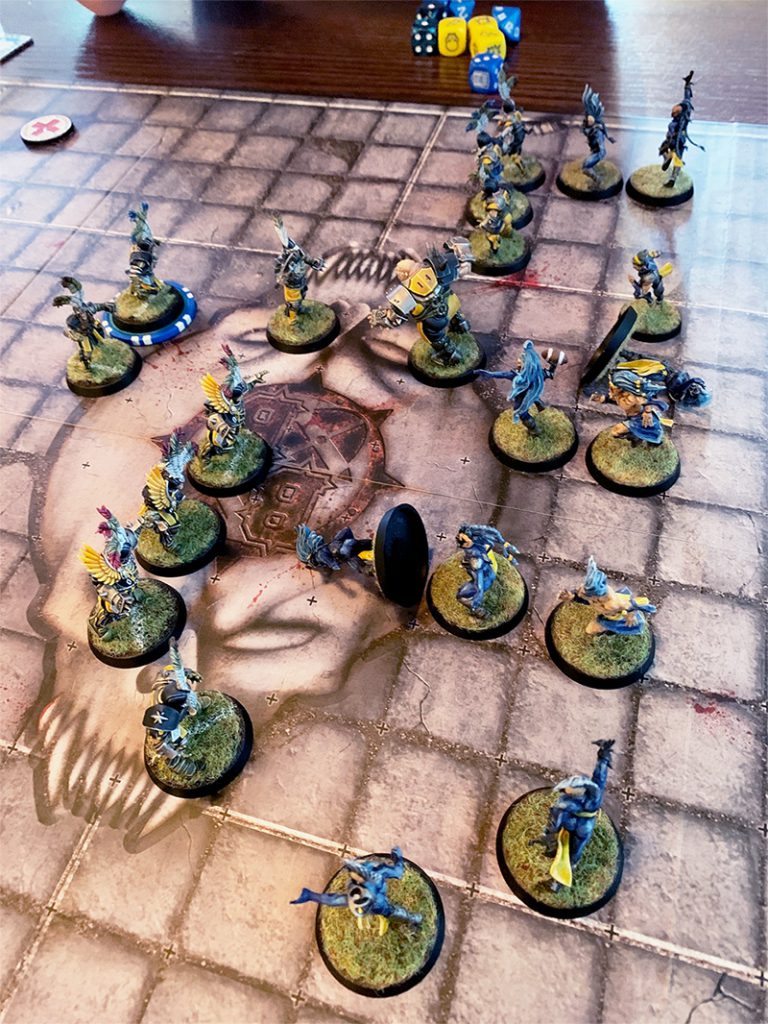
We covered some of the thinking around kick-off setups previously, and we’ve done a number of articles on other specific tactical aspects, but let’s go right back to the basics.
Action Order
Blood Bowl is a risk-management game. This is probably the single most important piece of knowledge to absorb and retain. Almost every action carries an element of risk, and your ability to mitigate or remove it is limited. Thus you need to structure your actions each turn to minimise the chances of a premature end to it. As a general principle, the most effective way to play out the average turn is to perform:
- any actions that don’t require dice rolls (moving unmarked players, standing up prone players, etc.)
- 2-die blocks or 1-die actions with automatic rerolls (3+ dodges using players with Dodge skill, etc.)
- 1-die blocks or other actions that succeed on 3+ rolls
- Blocks with Big Guys or other players with Loner
- Other rolls or sequences of actions with low chance of success
This is neither a comprehensive list nor an inflexible dogma. Sometimes you just need to do a risky thing early to try and win the game (and make sure you don’t burn your precious rerolls on actions elsewhere). But this principle will stand you in good stead for general play.
When your players have acquired additional skills that modify results or provide rerolls to actions, the risk and order priority of some of these actions can change. You can check out some typical probabilities of success for yourself on sites like Dave’s Action Calculator (bloodbowldave.com)
Caging
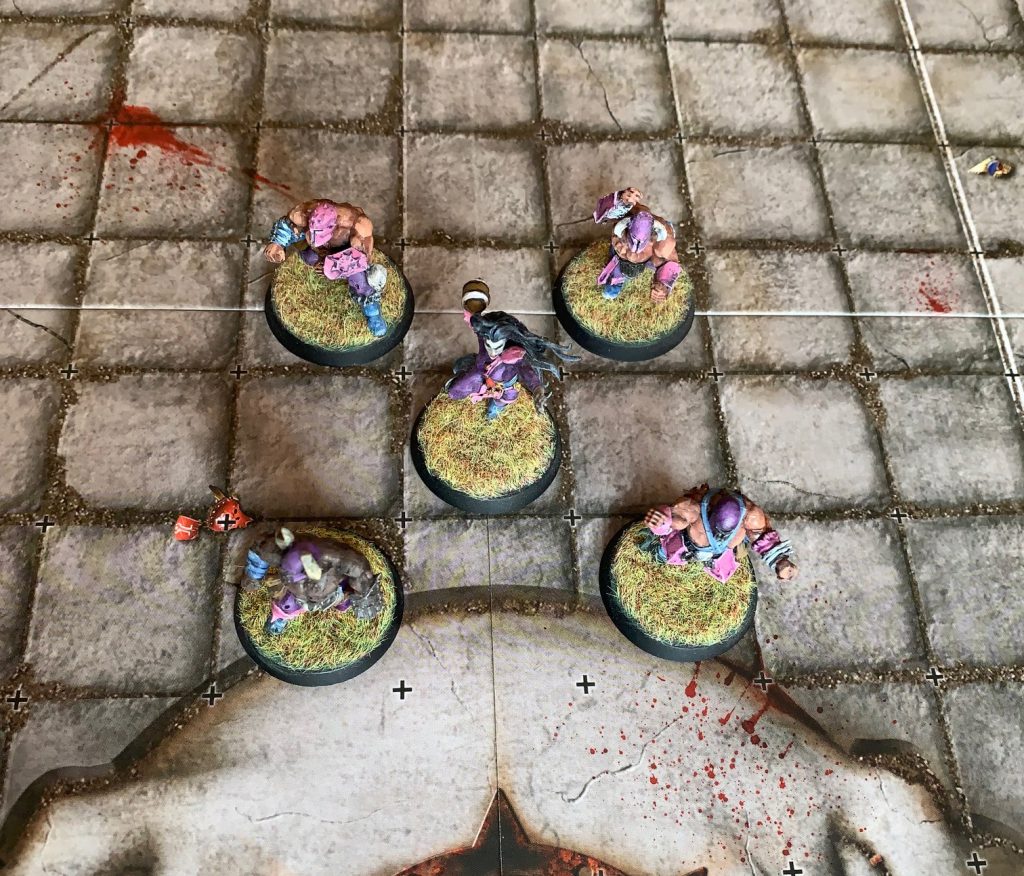
The signature tactic of Blood Bowl, you will probably see a cage every single game at some point. For the majority of teams and situations, this is the most effective way to protect a ball carrier on your drive.
Building a cage is a process you should be prepared for when you set up to receive the ball on your drive. Make sure you have enough free players who are also in range of wherever you expect your ball carrier to end up. Ideally you want your cage to be formed in the middle of the pitch and not too close to your own endzone.
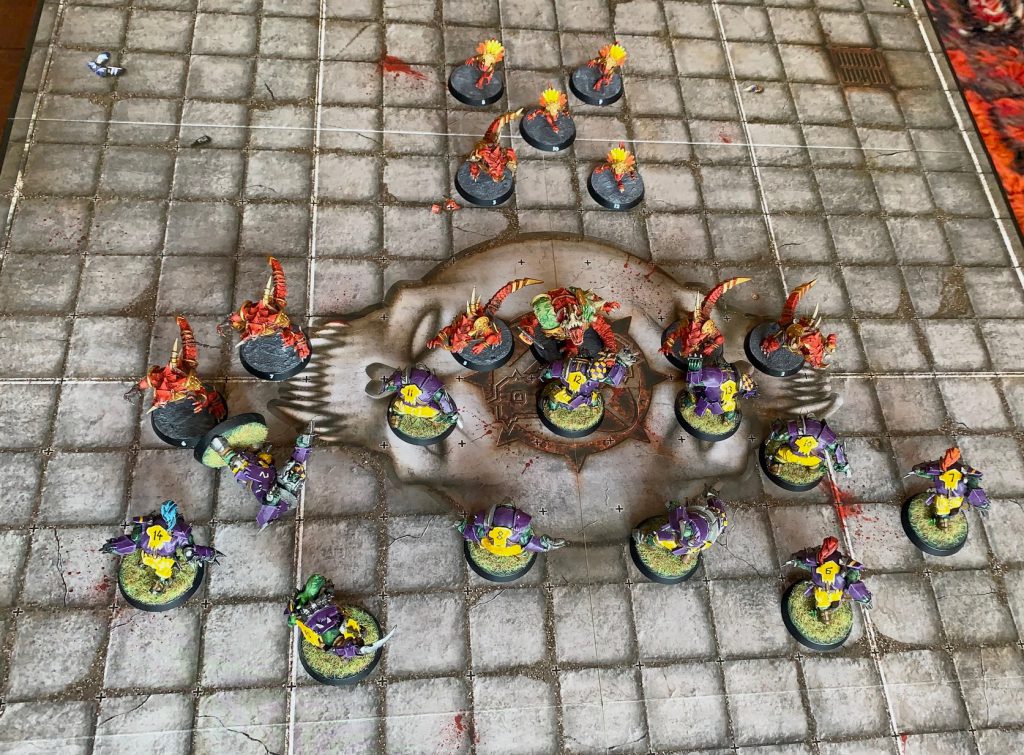
Advancing a cage down the field is worthy of an article in its own right, but for the most part you need players in front of your cage to penetrate your opponent’s lines and allow it to move forward. The greatest danger is leaving parts of your cage next to opposition players at the end of your turn, as this can create easy opportunities for them to peel the corners away.
Cage-Breaking
So, if cages are everywhere, and so effective, what can you do about them? As with many aspects of tactical play this will depend heavily on your team’s style and abilities, but there are a few general approaches:
- Create a wedge between the cage and the rest of their team – this is most easily achieved by agility teams at kick-off. Any kind of deep kick provides an opportunity to get your players between the opposition players on the LOS and wherever they set their cage up.
- Base up the cage corners and force the opponent to block you clear or dodge away – this is the simplest and most common method. If you are able to mark up multiple parts of their cage it will be very difficult for them to remove you and maintain its integrity, or move forwards. The obvious pitfall here is that you may take damage.
- Attack the ball carrier directly – If you have players with Leap, or AG2+ and Dodge (or just Team Re-Rolls), you can just try and attack the ball in the cage. This is likely to need 4+ or 5+ rolls, and you will then probably need a 1D or even -2D block on the ball. But if your attacker has skills like Wrestle or Strip Ball, chances of success may still be very good.
Screening
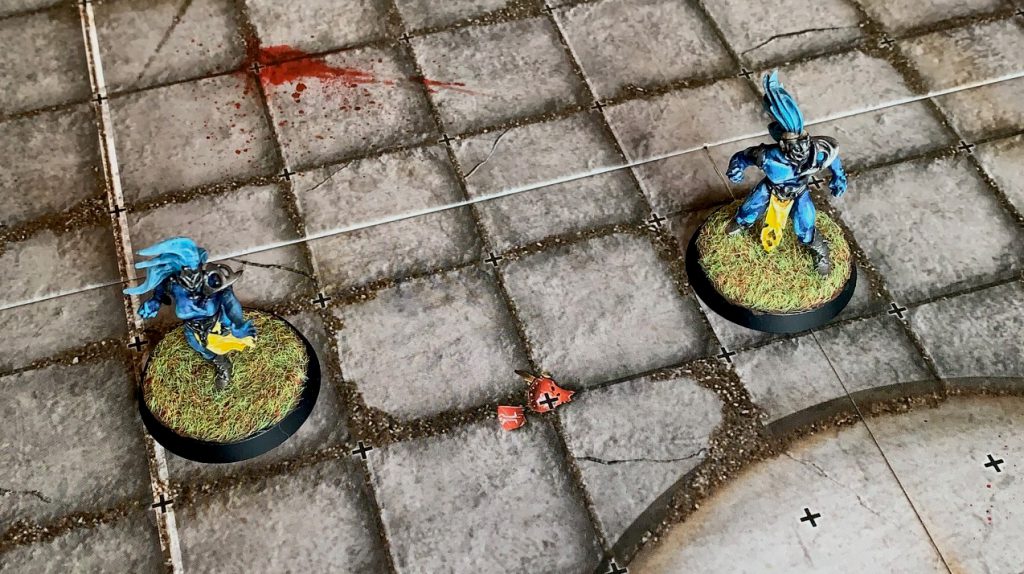
Screens are the most effective way of covering large areas of the pitch to prevent your opponent freely moving into them. Screens have utility on both sides of the ball. Many agile teams will forego a cage on offense and use a combination of screens instead, to give them more width, flexibility, and potential to outmaneuver opponents.
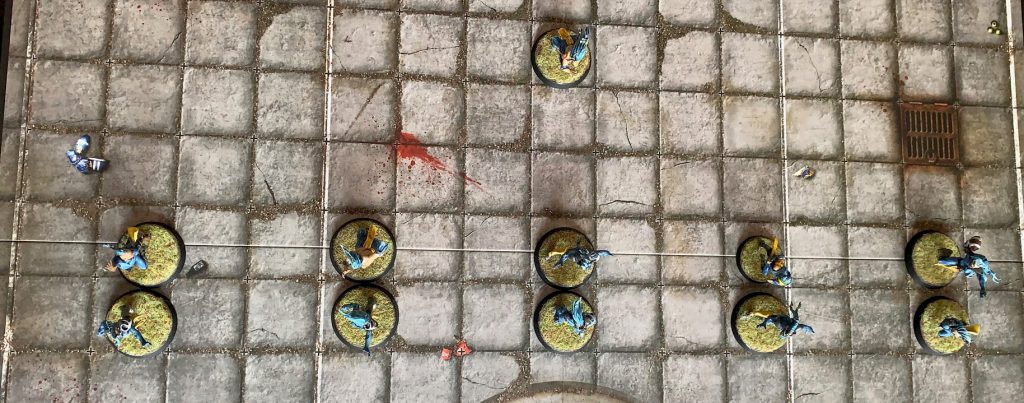
One of the most common defensive tactics is to create layered double screens. This causes huge headaches for both bash and agility opponents trying to break through. When using this tactic as an Agility team, you can dodge away from contact and reset these screens every turn, while giving up minimal ground to your opponent.
Penetrating Screens
Layered screens in particular are extremely difficult to get through. For Bash teams the main approach will simply be to Blitz the first level, and then push players through to base up the opponents around it and force the opponent to make Blocks or Dodges to recreate the screen.
Screens that are set up near the sideline can be Blitzed to the edge of the pitch to threaten surfs in following turns. If you have Frenzy, your ability to move screeners with your Blitz becomes even greater and can enable you to trap multiple opponents on the pitch edge.
For Agility teams, Blitzing the first layer of the screen can then enable 4+ and 3+ dodges past the player. This is often good enough when you really need to score.
To Base Or Not To Base
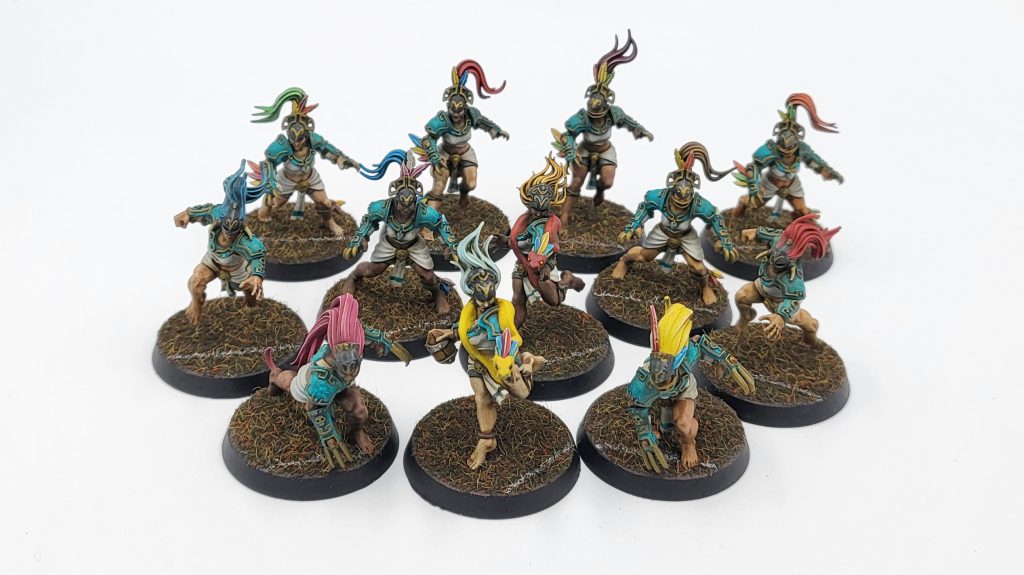
Basing up opponents is very tempting, but more often than not this simply gives free blocks to your opponent and leads to your players being removed. Even for strong bash teams, limiting opposition blocks is just good practice. Very often a good aim is to limit your opponent to only their Blitz action block each turn.
One strong use of basing is to limit the actions of powerful and expensive players with cheap ones. For example, a zombie is only 40k and can easily tie up low AG players without Block and Mighty Blow, like Sauruses, or Tomb Guardians, who cost twice or three times their value, for many turns. The Zombie may be knocked down but will probably just be able to get straight up again and keep them locked down. This lets the rest of your team do their thing and outvalue your opponent elsewhere. You can use the same tactic against Big Guys when you need to, but beware they may just remove you.
For teams with very high strength pieces or who have acquired some Guard, it can be possible to more safely base up opponents and control them by putting them in a position where they cannot find 2D or even 1D blocks. This tactic becomes more and more viable as you win the battle of attrition. Just beware that often these positions can fall like dominoes where a single initial block can create subsequent assists along the line.
Re-roll Management
With the changes in BB20 allowing the use of multiple Re-rolls a turn, management of this scarce resource has become more important than ever. And as we stressed at the beginning, Re-rolls are one of your few methods of mitigating bad luck and controlling the most fundamental aspect of the game: Risk.
One of the hardest skills (and psychological states) in Blood Bowl is judging that a turnover is not significant enough on which to use a Re-roll and accepting it. The ability to make this call will mostly come with experience, just as the call to go ‘all in’ when you have identified that you are in a pivotal moment in which using multiple re-rolls will change the game in your favour.
Game situation will play a large factor in making these decisions, which brings us neatly on to…
Game Management
To win games of Blood Bowl, all of the tactical play you’re mastering needs to fit within the larger picture of a limited-turn boardgame. This is where Game Management comes in and it is a big enough topic that we do have a comprehensive guide to the concept.
Skill Choices And Value

The Perennials
In Blood Bowl, some skills tower over others when it comes to their effectiveness. If you’ve ever read any of our team guides you will see them being recommended time and time again. The main culprits are:
- Block
- Dodge
- Guard
- Mighty Blow
These skills – and particularly the first two, are among the most powerful and ubiquitous in Blood Bowl. Virtually every team starts with at least a couple of players with these skills. For beginners it might not be obvious why they are held in such high regard as they don’t seem very flashy. As we stressed earlier, BB is a game about risk. These are skills that mitigate it; turn on turn, time and again.
Guard and Mighty Blow are good because they enhance your ability to control the pitch through effective blocking, and cause removal, respectively. Removal is incredibly important in Blood Bowl because it tends to have a snowball effect. The first player to gain a numbers advantage then finds it easier to provide assists and make two-dice blocks, which means they are more likely to get more removals, and so on.
Toolbox skills
There are a number of other skills that provide great value by making up part of a ‘toolbox’ to enable you to solve particular problems, and deal with certain kinds of opposition threats and skills. These skills tend to work best when splashed amongst your other skill choices, and some of them are more effective when combined with other skills. For Agility teams, these are often preferred to Guard or Mighty Blow, because they tend to dovetail with their different approach to the game.
- Tackle is the most significant, because Dodge is one of the best skills in the game and ubiquitous. Some other strong toolbox-type skills are:
- Wrestle
- Frenzy
- Strip Ball
Fouling
Fouling can be one of the most effective ways to generate removals and win the war of attrition. There are two skills that play into this, but note that Sneaky Git is an Agility skill, and thus not so easily available.
- Sneaky Git
- Dirty Player
We have a full guide to fouling that explains everything else you need to know.
Other Value Skills
- Leader
- Sidestep
- Stand Firm
- Diving Tackle
Leader is a skill we have recommended in many of our team guides, especially in Tournament settings, because it is an economical way of acquiring additional Re-rolls. Sidestep and Stand Firm are strong positional skills that tend to synergise well with other skills. They are excellent second or third skill choices for Blodgers, Guarders, and many others. Diving Tackle is an excellent skill that can turn even humble Stunties into extremely annoying pieces who can shut down opposition movement. It also has tremendous synergy with the aforementioned Diving Tackle and Sidestep.
We hope this gets all you beginners on the right path to becoming better BB players. If you have any questions, suggestions, or feedback on this or any of our BB content, you can leave them below or email us at contact@goonhammer.com
Interested in putting your newfound / veteran skills to the test? On August 19th Goonhammer is hosting THE SWELTER BOWL in Baltimore, Maryland. Tickets are on sale now!
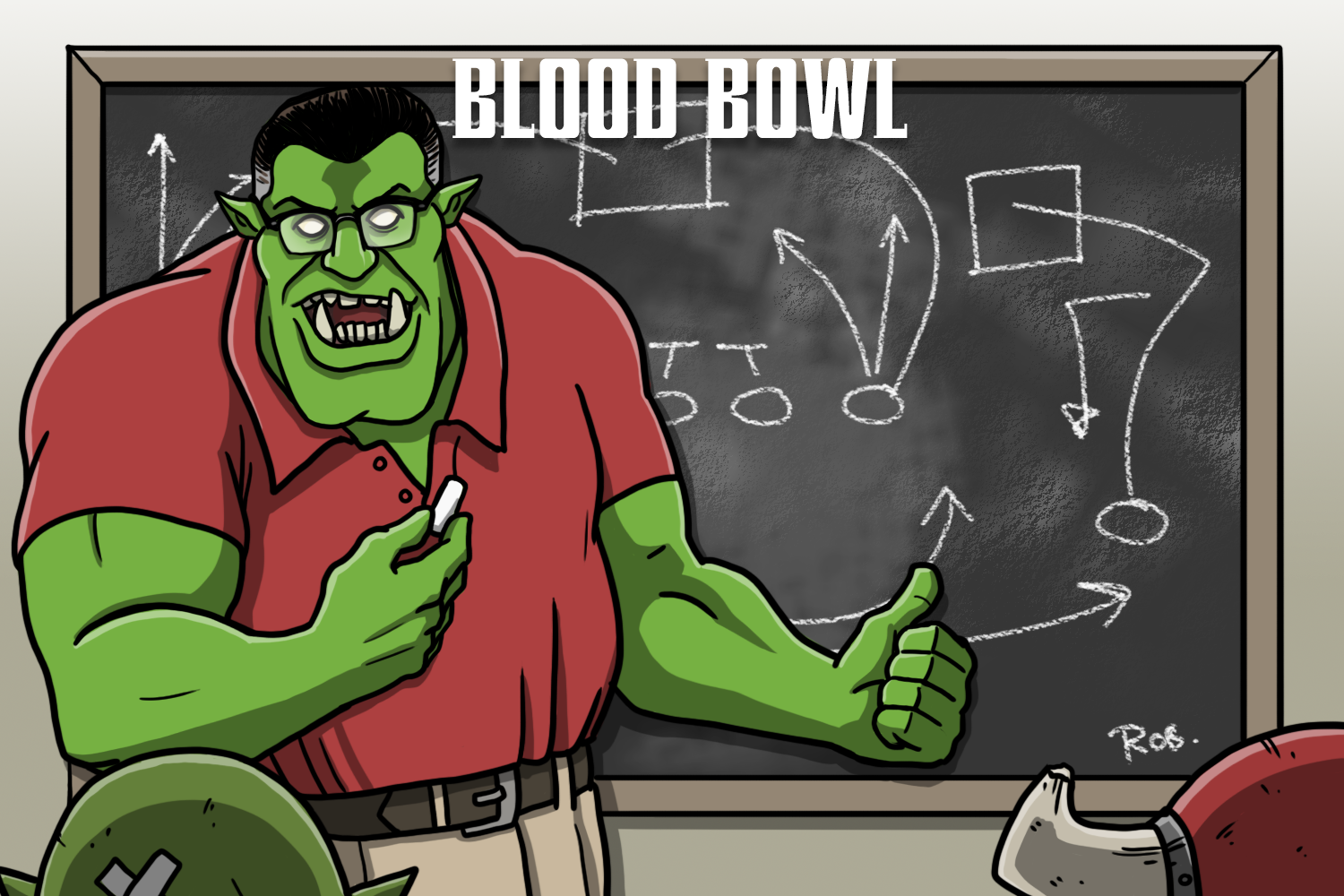


You must be logged in to post a comment.